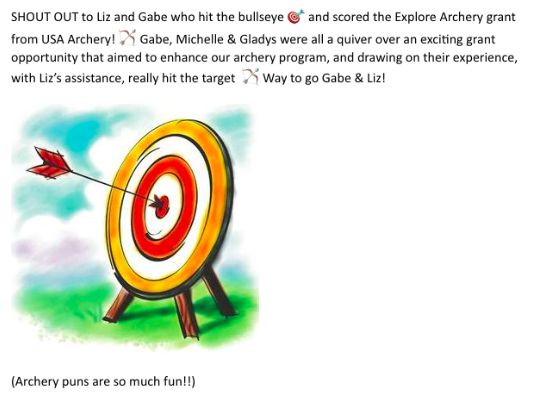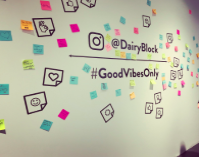
Meredith Reynolds, Park Planning & Partnerships Manager, City of Long Beach, California

What I’m Listening To: Heart Like A Levee Album by Hiss Golden Messenger (from Durham, North Carolina…now isn’t that serendipitous!)
What I’m Reading: Examples of park strategic plans
What I’m Watching: Brooklyn 99, Season 7
On my way to school each morning when I was a kid, my dad would stop my sister and I, flash his twinkle-eyed smile that animated the smile lines around his eyes and say ‘make it a good day!’ I would usually roll my eyes and reply ‘daaaaaaaddd’ as I headed off to school.

He said it every morning. I know it was important to him to impart this message, but I’m also certain he took at least a little pleasure in making his daughter roll her eyes in childish embarrassment. At one point I asked him, with some level of exasperation, why he always said it.
He said the day is what you make it. He said you have choices. I was recently reminded of this lesson.
In an organization with over 5,000 employees, my team performs work that cannot be completed without others completing the necessary steps their job requires as a part of a larger bureaucratic ballet. In this dependent work environment, no one can do anything alone and this symbiotic relationship is what makes our local government work strong.
Yet, when one person is not in sync, this can cause disruption and have a considerable effect on the ability of others to do their job. It’s likely you’ve heard these statements or experienced these sentiments before…
…“if so-and-so just did their part of the process, I could do what I need to in order to complete the task/project”
…“if so-and-so told me they needed that information by that dead
line, I would have made it a priority to finish it on time”
…“if so-and-so followed the approved procedure, I wouldn’t be wasting my time with extra work”
More than these common complaints, my team was struggling with how they were being treated by colleagues. Interactions had become discourteous, unhelpful, and impersonal.
Their concerns made me reflect how the many pressures and expectations of a local government organization, no matter the size, can easily draw focus away from acknowledging the contributions of individuals, causing employees to lose sight of how their attitude and work affects others. This can erode good manners and common courtesy, and materially affect the goodwill and partnership among team members.
We had an earnest conversation about how this behavior affected their work and how it made them feel. We also discussed what we were and were not in control of. In this situation, we don’t supervise these colleagues or their work and don’t have control over their behavior.
So we focused on what WE could do to encourage the type of behavior we hoped to see – to make it a good day.
The team made a choice to exhibit behavior that acknowledged the interdependency of our work by building gratitude into our regular routine. This manifested by sending personally written thank you notes each month to someone who had been helpful – someone they could not have done their job without.
A standing staff meeting agenda item allowed each team member to announce who they would be sending their letter to and why, and I kept a running list of recipients. My team’s selections of monthly thank you note recipients were thoughtful and very deserving of a pat on the back.
As we began sending these thank you notes, the team commented about how they felt writing them and what reactions they were getting from those they sent letters to. Each recipient communicated their appreciation and joy for the personal note and acknowledgment.
One recipient indicated that in his 30+ year career with the city, he had never received a handwritten thank you note and was tickled to get one!
And as it turns out, making the choice to make it a good day, makes other people happy and also make you happy too! Scientific research suggests that saying thank you not only improves your happiness, but it can also improve the well-being of another person, and increase health and decrease depression.
Here are some interesting examples of gratitude and positivity that can be easily (and cost-effectively) replicated…
 … Denver’s @DairyBlock utilizes a long white hallway in an office building as a fun positivity wall. #GoodVibesOnly invites visitors to use brightly-colored sticky notes to leave sentiments of good vibes on the wall.
… Denver’s @DairyBlock utilizes a long white hallway in an office building as a fun positivity wall. #GoodVibesOnly invites visitors to use brightly-colored sticky notes to leave sentiments of good vibes on the wall.
…The Wanderlust Festival in Whistler Village, Canada featured a Gratitude Wall. This community art project encouraged visitors to use chalk to add one thing they were grateful for a large public chalkboard for all to see.
…My Department has encouraged ‘Shout Outs’, Department-wide emails meant to recognize and celebrate a team accomplishment that has a
Departmental impact. This allows other staff to see how their colleagues are contributing and respond with their own congratulations. (I really love using puns in my Shout Outs, because, you know… puns!)
Inherently, in the choice to make it a good day is the underlying positivity. The opening lyric from Foy Vance’s song She Burns hums ‘She is a little explosion of hope’.
One of the greatest opening lyrics of all time, this line really resonates with me because I strive to bring this type of culture to my team and those I interact with. So, as it turns out, I can tell my dad (in my child-like intonation that is saved for just these moments) “I was too listening!” and he can roll his eyes and smile knowing I used my choice wisely and made it a good day.
I would love to see the ELGL network share more of these examples – I’d love to learn from you!
